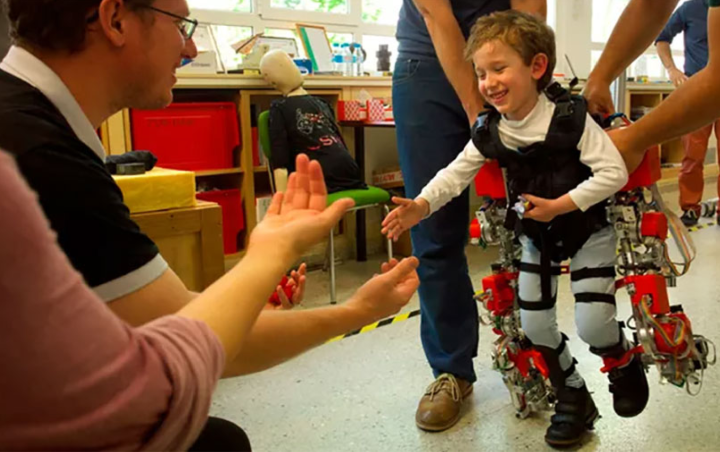
Designed for those living with spinal muscular atrophy (SMA), the aluminum and titanium-based exoskeleton is intended for children between the ages of 3 and 14. Not only can it help its wearers walk, but engineers say that it could also be used in hospital settings as a form of muscle training therapy to combat the side effects of SMA, notably progressive muscle wasting, scoliosis, osteoporosis, and lung dysfunction.
“The main difficulty in developing this type of pediatric exoskeleton is that the symptoms of neuromuscular diseases, such as spinal muscular atrophy, vary over time,” said CSIC researcher Elena Garcia. “So an exoskeleton able to adapt to these changes autonomously [is] necessary. Our model includes intelligent joints that modify the stiffness automatically and adapt to the symptoms of each child at all times.”
The exoskeleton is comprised of a series of long supports, known as orthotics, that adjust and adapt to the legs and torso of the wearer. Thanks to the joint operation of the machinery’s engines, the exoskeleton is able to mimic human muscle movement, providing the necessary strength a child would need to stand and walk about on his or her own. And with its built-in sensors, the skeleton is able to detect and encourage leg movement. On a single charge, the device should be able to maintain five hours of use.
Though still not available to the public, Garcia and her team hope to utilize crowdfunding platforms to raise the necessary capital to bring the exoskeleton and the gift of movement to children across the world.


